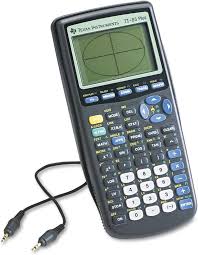Unlocking Complex Problems: The Rise of the Graphing Calculator in Education
The landscape of education continuously evolves as innovative tools emerge to enhance learning and comprehension amongst students. Integral to this ongoing growth is the integration of technology in the classroom, particularly the infusion of calculators designed for complex mathematical computations and visualisations. In recent years, the graphing calculator has become a central instrument in empowering students to tackle intricate problems in mathematics and science.
The Importance of Graphing Calculators
Graphing calculators have surged in popularity due to their capability to plot graphs and solve equations that would otherwise be tedious and error-prone if done manually. The devices are equipped with screens capable of displaying detailed graphical representations, making it easier for students to visualise and understand mathematical concepts.
The utility of these devices extends beyond mere computations. They play a critical role in teaching and learning, enabling students to perform a variety of functions ranging from basic arithmetic to high-level calculus and linear algebra.
Innovation in Mathematical Education
Innovations in education necessitate tools that keep pace with curricular advancements. The graphing calculator has been one of the most significant technological integrations into the curriculum, acting as a bridge between theoretical constructs and their practical applications. These calculators have advanced features like dynamic geometry, allowing for exploration and experimentation in a way that was not possible a few decades ago.
The adoption of graphing calculators in educational settings encourages independent learning and problem-solving skills. Students are often able to explore mathematical scenarios and manipulate variables in real time, fostering a hands-on approach to learning.
Enhancing Understanding of Complex Concepts
One of the notable impacts of graphing calculators is their ability to enhance students’ understanding of complex concepts. By visualising functions and plotting graphs, learners can see the relationship between equations and their graphical outputs. This facilitates a deeper comprehension of mathematical relationships and patterns.
Moreover, the ability to store and analyse data on these calculators enriches the learning experience. Students are not just computing answers, they are engaging with the material, allowing for investigative learning that goes beyond the traditional textbook approach.
Graphing Calculators and Standardised Testing
Standardised testing bodies have acknowledged the role of technology in education by permitting the use of graphing calculators during examinations. Their inclusion reflects the realisation that proficiency with these devices is part of being well-versed in modern mathematics.
However, it’s crucial that students become adept with the functionality of graphing calculators before these high-stakes assessments, as familiarity can significantly reduce stress and increase efficiency during exams.
Challenges and Considerations
Despite their many benefits, the rise of graphing calculators in education is not without challenges. There are concerns about the dependence on technology, potentially hindering students’ ability to perform calculations without it. Educators must strike a balance, ensuring that technology is used as a supportive tool rather than a crutch.
Additionally, there is an ongoing debate about equitable access to technology. Graphing calculators can be expensive, and not all students can afford them. Educational institutions and policymakers are thus faced with the task of ensuring these invaluable learning tools are accessible to all students.
READ MORE : Cost To Move From Texas To California
Preparing for the Future
In a world that is increasingly driven by technology, proficiency in utilising digital tools is paramount. The rise of the graphing calculator in education does not merely represent a change in how subjects like mathematics are taught, but also prepares students for a future where technology and data analysis are integral to many careers.
As educators and students alike continue to embrace graphing calculators and other smart math tools, the nature of solving complex problems evolves. It shifts from a daunting task to an interactive and engaging learning experience, unlocking potential and opening up new avenues for academic and professional growth.
Conclusion
The incorporation of graphing calculators into educational curricula has revolutionized the way complex mathematical problems are approached and solved. As these devices become more ingrained in the learning process, students are provided with robust opportunities to develop critical thinking and analytical skills that are essential in the modern world. The graphing calculator is not just a tool, but a beacon that signifies the ongoing commitment to equipping learners with the means to unlock and understand the complexities of the world around them.
As education continues to adapt to advancements in technology, the graphing calculator stands as a testament to the power of innovative tools in fostering a deeper understanding and appreciation of mathematics. By integrating these devices into the fabric of learning, educators are setting the stage for a more informed, skilled, and technologically fluent generation ready to meet the challenges of tomorrow.

